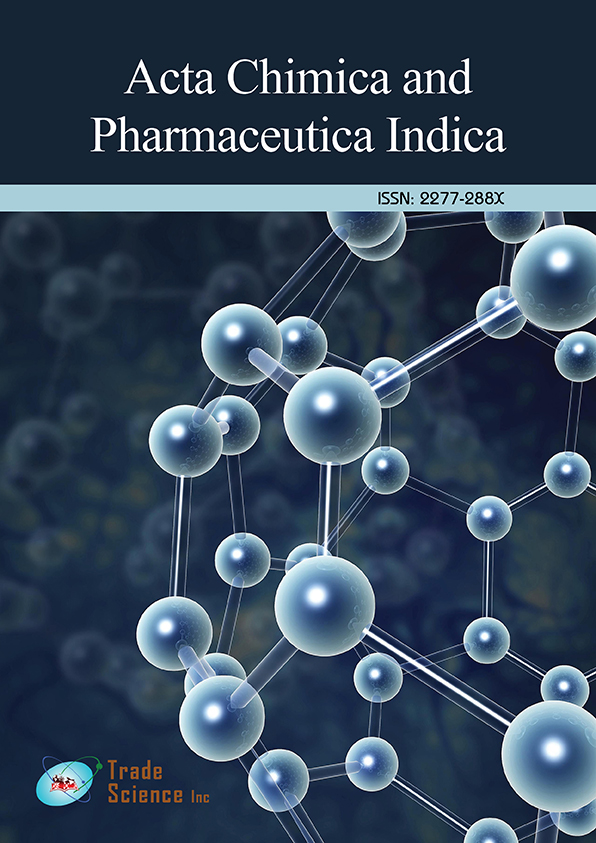Perspective
, Volume: 15( 1) DOI: 10.37532/2277-288X.2025.15(1).232Structure of DNA-Lipids-Me2+ Complexes and Potential Cellular Applications
- *Correspondence:
- Rome Miller Division of Structural Chemistry, University of Oxford, United States, E-mail: millerrome399@gmail.com
Received: October 01,2023, Manuscript No. tsacpi-24-116343; Editor Assigned: October 05,2023, Pre-QC No. tsacpi-24- 116343(PQ); Reviewed: October 20,2023, QC No. tsacpi-24- 116343(Q); Revised: October 25,2023, Manuscript No. tsacpi-24- 116343(R); Published: October 29,2023. DOI: 10.37532/2277-288X.2023.13(4).216
Citation: Miller R. Structure of DNA-Lipids-Me2+ Complexes and Potential Cellular Applications. Acta Chim Pharm Indica 2023;13(4):1-2.
Abstract
This research article explores the structure of DNA-lipids-Me2+ complexes and their potential cellular applications. The complexation of DNA with lipids and divalent metal ions (Me2+) has gained significant attention due to its potential in gene delivery and therapeutic applications. Understanding the structural aspects of these complexes is crucial for optimizing their usage in targeted gene therapy and other biomedical applications.
Keywords
Gene delivery; Cellular applications; Lipids
Introduction
The complexation of DNA with lipids and divalent metal ions (Me2+) holds promise for a range of biomedical applications, particularly in gene delivery and targeted therapies. These complexes offer an efficient means to deliver genetic material into cells, presenting potential in treating genetic disorders, cancer, and various other diseases. The unique combination of DNA, lipids, and Me2+ allows for the formation of stable and bio-compatible structures, facilitating successful cellular uptake and gene expression. In this research, we delve into the structure of DNA-lipids-Me2+ complexes and explore their potential applications in cellular contexts.
DNA is the fundamental genetic material that carries genetic instructions in living organisms. Its unique double-helix structure provides stability and allows for precise genetic coding. However, the efficient delivery of therapeutic DNA to target cells is a significant challenge in gene therapy. Lipid-based delivery systems have emerged as promising carriers, as they can encapsulate and protect DNA while facilitating its cellular uptake. Incorporating divalent metal ions, such as Mg2+ or Ca2+, further stabilizes the complex and improves its transfection efficiency.
The structure of DNA-lipids-Me^2+ complexes is characterized by the formation of stable lipid bilayers encapsulating the DNA, stabilized by Me2+ ions. The positively charged Me2+ ions interact with the negatively charged DNA backbone, promoting complex stability and protection against enzymatic degradation. The lipid bilayers provide protection and aid in cellular uptake through endocytosis. Understanding the precise structural details of these complexes is essential for tailoring their properties and enhancing their performance in cellular applications.
The DNA-lipids-Me2+ complexes hold immense potential in various cellular applications. Gene delivery is a primary focus, as these complexes can efficiently transport therapeutic genes into target cells, enabling gene-based therapies for genetic diseases, cancer, and other disorders. Additionally, these complexes can be engineered to encapsulate different types of nucleic acids, such as small interfering RNA (siRNA) or messenger RNA (mRNA), broadening their therapeutic potential beyond gene delivery.
The stability and biocompatibility of DNA-lipids-Me2+ complexes make them suitable for use in vaccine development, where they can deliver genetic material encoding antigens for the induction of specific immune responses. Moreover, these complexes could be utilized in diagnostic applications, facilitating targeted delivery of contrast agents or biomarkers to specific cells for imaging purposes.
Conclusion
Understanding the structural intricacies of DNA-lipids-Me2+ complexes is crucial for optimizing their performance and enhancing their applications in gene delivery and other biomedical realms. These complexes hold great promise for targeted therapies, vaccines, and diagnostics, offering a versatile platform to address a range of diseases and disorders effectively. Further research and development in this field are essential to harness the full potential of these complexes for improving human health and advancing biomedical science.
